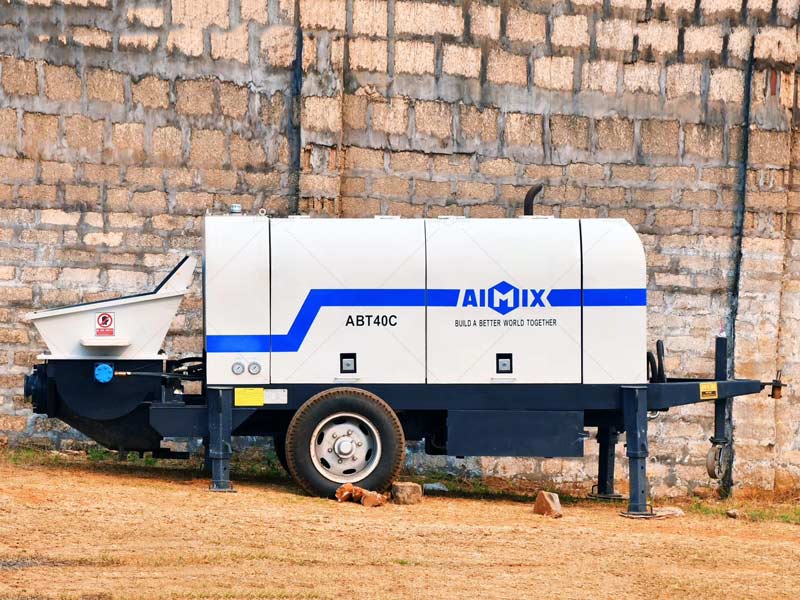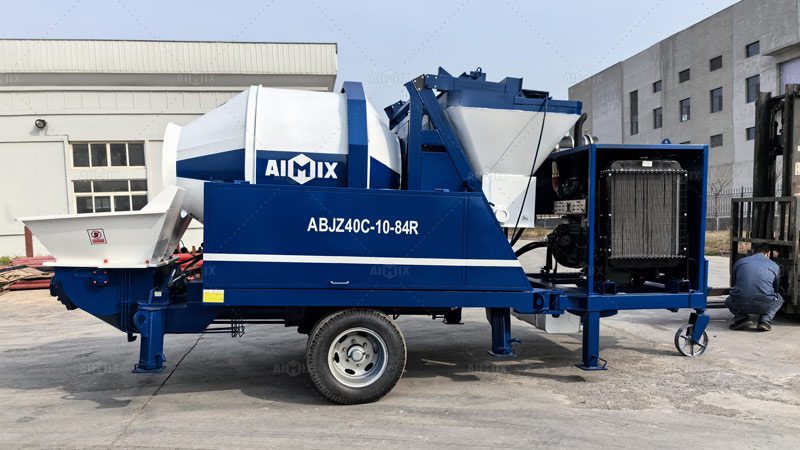Colombian construction companies are under constant pressure to deliver projects on time, reduce costs, and ensure top quality. With rising competition and tighter deadlines, traditional concrete pouring methods often fall short. This is where modern concrete pumps come in. By offering faster concrete delivery, greater accuracy, and safer operations, these machines have become an indispensable tool in the industry. Understanding how concrete pumps enhance competitiveness can help Colombian contractors stay ahead of market demands.

Trends Driving Concrete Pump Adoption In Colombia
The Colombian construction sector has experienced significant growth in recent years, fueled by urbanization, housing demand, and infrastructure projects such as highways, bridges, and commercial complexes. As projects become more complex, contractors are turning to advanced equipment. Several major trends highlight why the adoption of concrete pump Colombia(bombas para concreto colombia) solutions is accelerating.
Shift Towards Intelligent And Automated Systems
Automation is transforming construction equipment worldwide, and Colombia is no exception. Intelligent concrete pumps now provide real-time data on flow rate, pumping pressure, and concrete consistency. This level of monitoring not only reduces human error but also enables contractors to make instant adjustments. For example, if pressure drops due to blockages, the pump alerts operators immediately, preventing costly delays and rework. Such features are helping companies deliver more reliable results and gain client confidence.
Increasing Demand For Mobility And Flexibility
Urban construction often takes place in crowded environments with limited maneuvering space. Mobile and trailer-mounted pumps can easily adapt to these conditions. They allow contractors to move between projects without losing valuable time. A company working on multiple mid-sized residential buildings in Bogotá, for example, can rely on a mobile pump to serve several projects in one week, improving asset utilization and cutting transportation costs.
Eco-Friendly And Energy-Efficient Solutions
With sustainability now a global priority, Colombian contractors are also adopting environmentally friendly equipment. Modern pumps consume less fuel and produce fewer emissions compared to older models. In addition, energy-saving features like variable power control reduce wear and tear on the machine. Choosing eco-friendly options not only supports compliance with environmental standards but also enhances a company’s reputation among clients who value sustainable practices.
Advantages Of Using Concrete Pumps
Enhanced Efficiency And Productivity
Concrete pumps dramatically improve the speed and quality of concrete placement. Instead of relying on manual labor or cranes with buckets, which are slow and inconsistent, pumps deliver concrete directly to the exact location required. For high-rise projects, truck-mounted pumps can place concrete hundreds of meters vertically, saving hours of work each day. The result is faster project completion and better allocation of resources.
Improved Safety On Construction Sites
Workplace safety is a growing concern in Colombia’s construction industry. Traditional methods often expose workers to risks such as carrying heavy loads or working on scaffolding with buckets. By reducing manual handling, concrete pumps lower the likelihood of injuries. Built-in safety mechanisms like overload protection and emergency stop functions further minimize risks, creating a safer and more efficient work environment.
Reduced Labor Costs
Labor shortages and rising wages make efficiency even more important. Intelligent pumps can be operated by fewer workers, allowing contractors to allocate manpower to other tasks. A pump that replaces the work of ten laborers pouring concrete manually significantly reduces labor expenses. This saving directly impacts competitiveness, especially in large-scale projects where labor is one of the biggest costs.
Long-Term Cost Savings
At first glance, the concrete pump price(precio bomba de concreto) may seem high. However, when considering reduced waste, lower fuel consumption, less downtime, and extended machine life, the total cost of ownership is much lower than traditional methods. Contractors often find that their investment pays off within a few projects. In competitive tenders, the ability to quote faster and more cost-effective timelines thanks to a pump can mean the difference between winning or losing a contract.

Factors To Consider When Choosing A Concrete Pump
Project Size And Scope
Choosing the right type of pump(bomba de concreto) depends heavily on project requirements. Large-scale infrastructure such as bridges or airports may require truck-mounted pumps with high output and reach, while smaller housing projects may benefit from versatile trailer pumps. Contractors in rural areas also prefer mobile options that can handle rough terrain while delivering consistent performance.
Budget And Total Cost Of Ownership
While some contractors focus mainly on the initial concrete pump price, experienced companies evaluate the long-term costs. Intelligent pumps may cost more upfront but typically save money by reducing maintenance needs and improving fuel efficiency. Considering overall cost of ownership ensures better financial planning and stronger competitiveness.
After-Sales Support And Maintenance
A well-maintained pump can last for many years. That is why after-sales service plays a crucial role in purchasing decisions. Reliable manufacturers offer quick access to spare parts, technical support, and training for operators. Companies with strong service networks in Colombia provide a significant advantage for contractors who cannot afford downtime on critical projects.
Lessons From The Regional Market
Neighboring markets also provide valuable insights. For instance, the adoption of modern concrete pump Peru(bomba de concreto peru) models has allowed contractors there to speed up large infrastructure projects such as roads and dams. The lessons are clear: companies that invest in advanced equipment gain efficiency and reduce costs, while those relying on outdated methods struggle to remain competitive. Colombian contractors can apply these lessons to gain a stronger position in both domestic and regional markets.
Future Outlook And Trends
The future of concrete pumping in Colombia looks promising. Advances in digital integration will allow pumps to connect with project management software, enabling contractors to track performance and schedule maintenance proactively. AI-driven pumps may even predict failures before they happen, further reducing downtime. Hybrid and electric-powered pumps are also expected to gain ground as sustainability becomes a top priority across Latin America.
Conclusion
Concrete pumps are no longer just optional tools; they are strategic assets that enhance efficiency, safety, and profitability. By investing in intelligent concrete pump Colombia solutions, companies can improve their competitiveness, reduce project risks, and secure more contracts. With lessons from regional markets like concrete pump Peru and growing domestic demand, Colombian contractors have every reason to embrace this technology and position themselves for long-term success in a dynamic construction industry.
